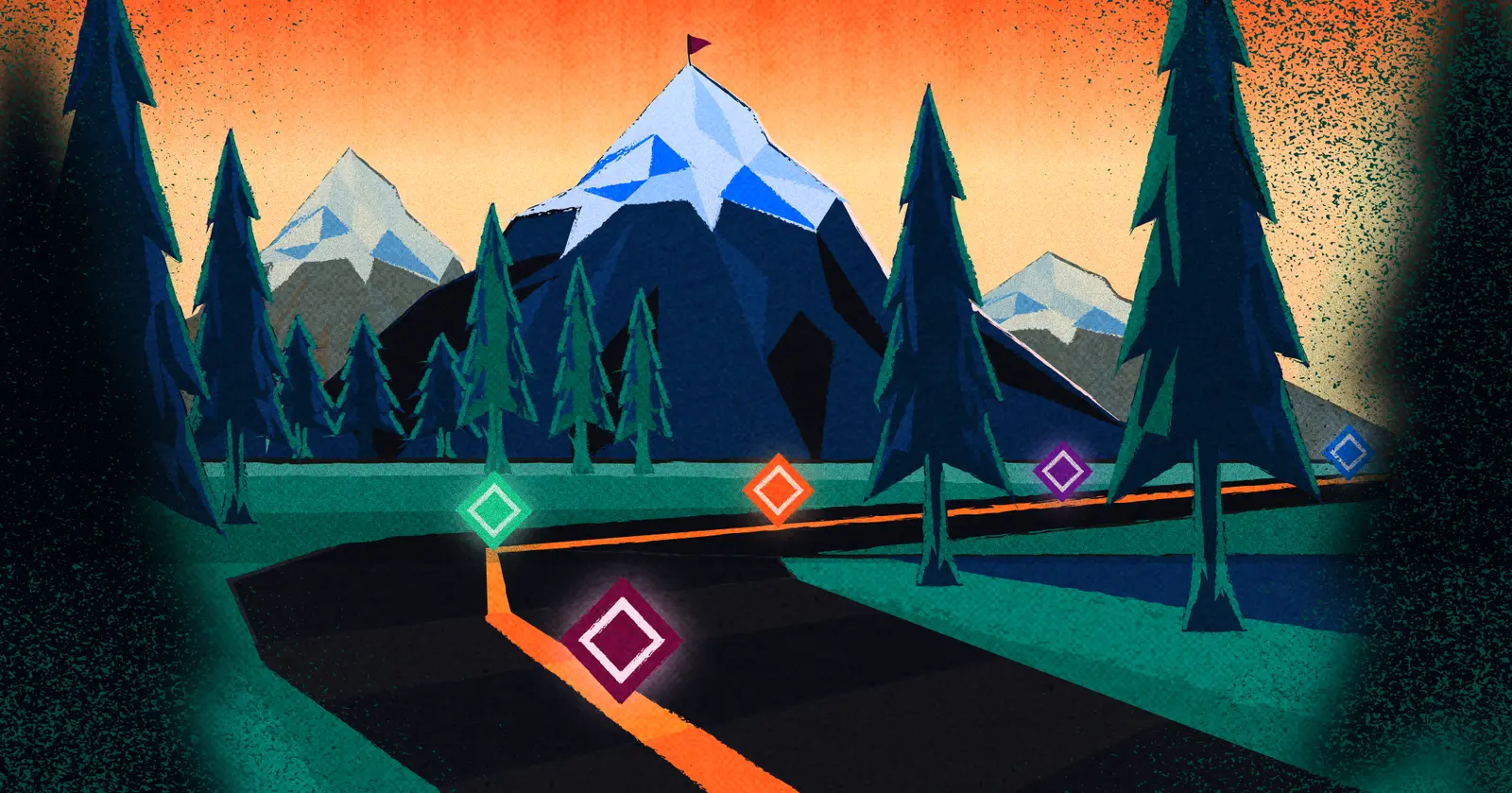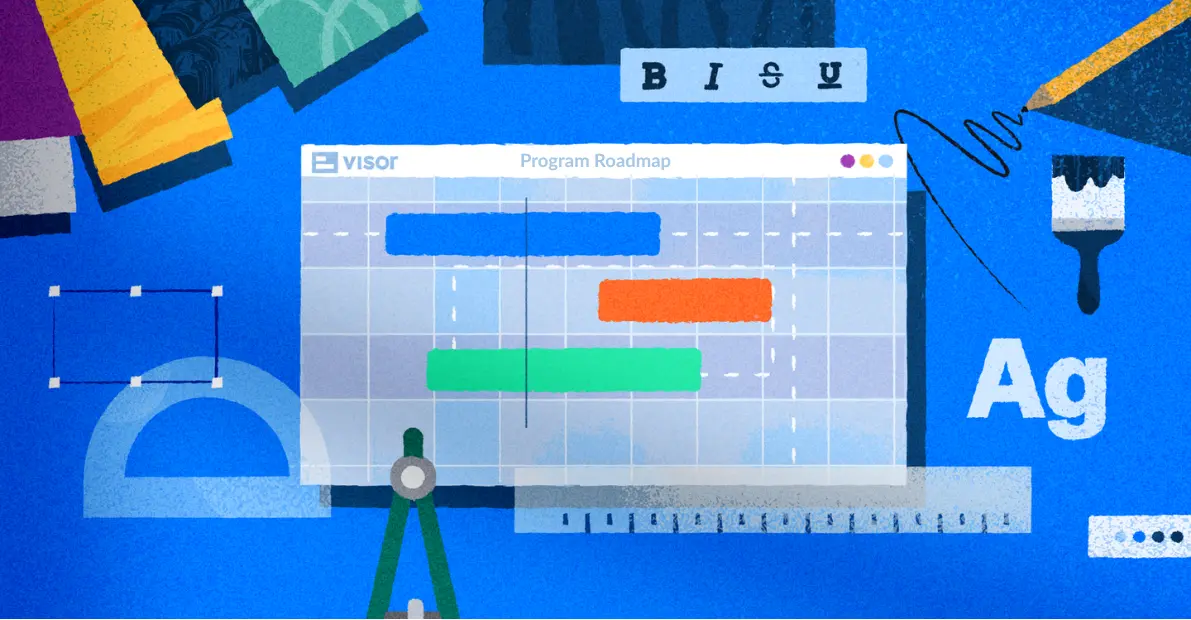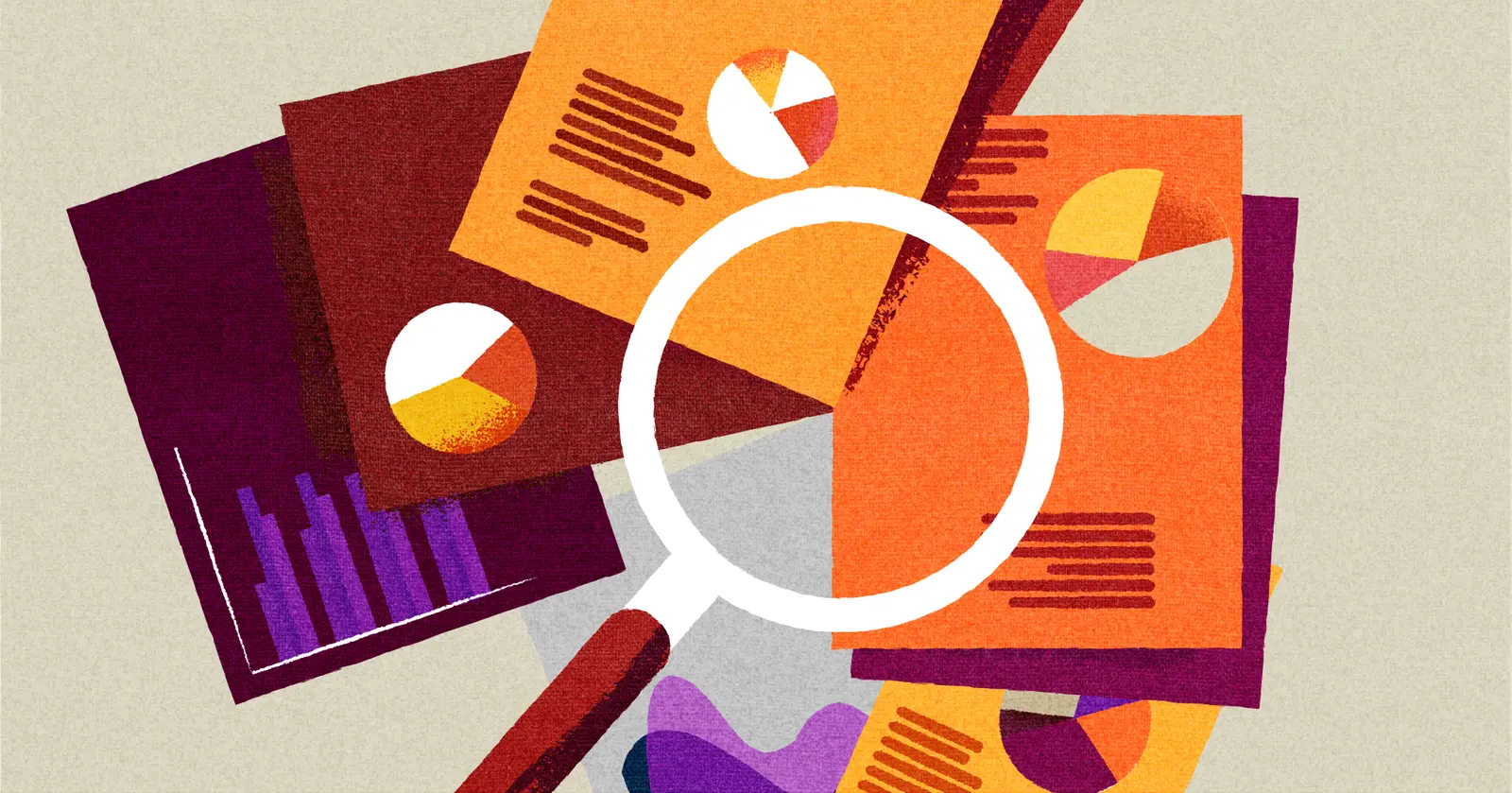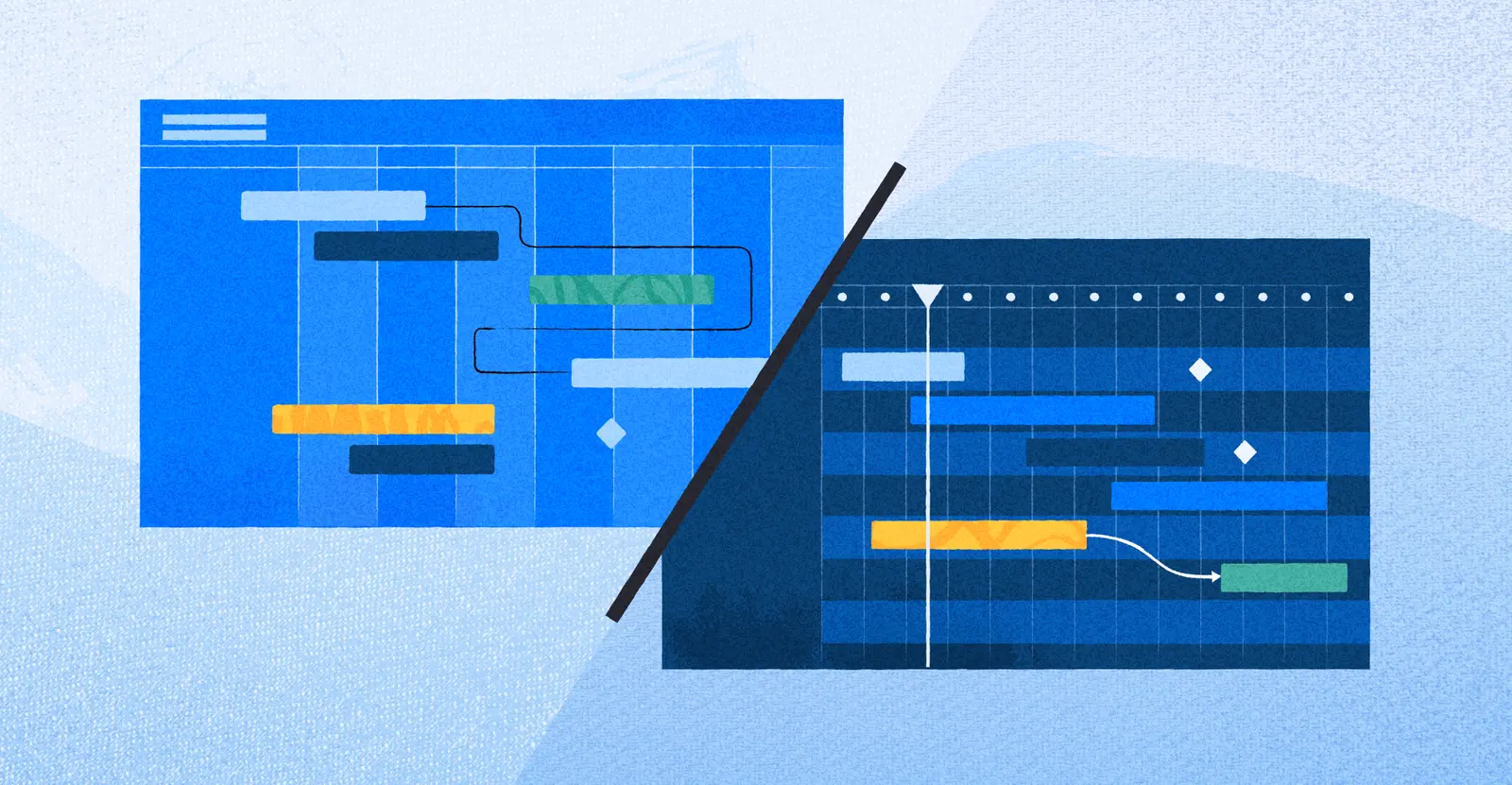
When To Use a Gantt Chart vs Timeline
Choosing when to use a Gantt chart vs timeline isn’t a big, dramatic fight with only one right answer. They’re very similar ways of displaying information, so many use cases will overlap.
However, there are times where one or the other makes for a better choice. But which one is the best for your needs?
In this article, we’ll cover:
- What is a Gantt chart
- What is a timeline
- When to use a Gantt chart vs timeline
- What tools are the best for Gantt charts vs timelines
If you want Gantt charts or timelines for your project, you can rely on Visor. Visor is a project portfolio management tool that allows you to put the same data in multiple beautiful views with ease. Try it today, for free!
What is a Gantt chart in project management?
A Gantt chart is a type of chart used in project management to display a given project’s tasks and timelines in a horizontal bar chart format. Gantt charts help project managers and their teams track progress, allocate resources, and spot potential issues early.
A Gantt chart with Jira data in Visor showing multi-portfolio data
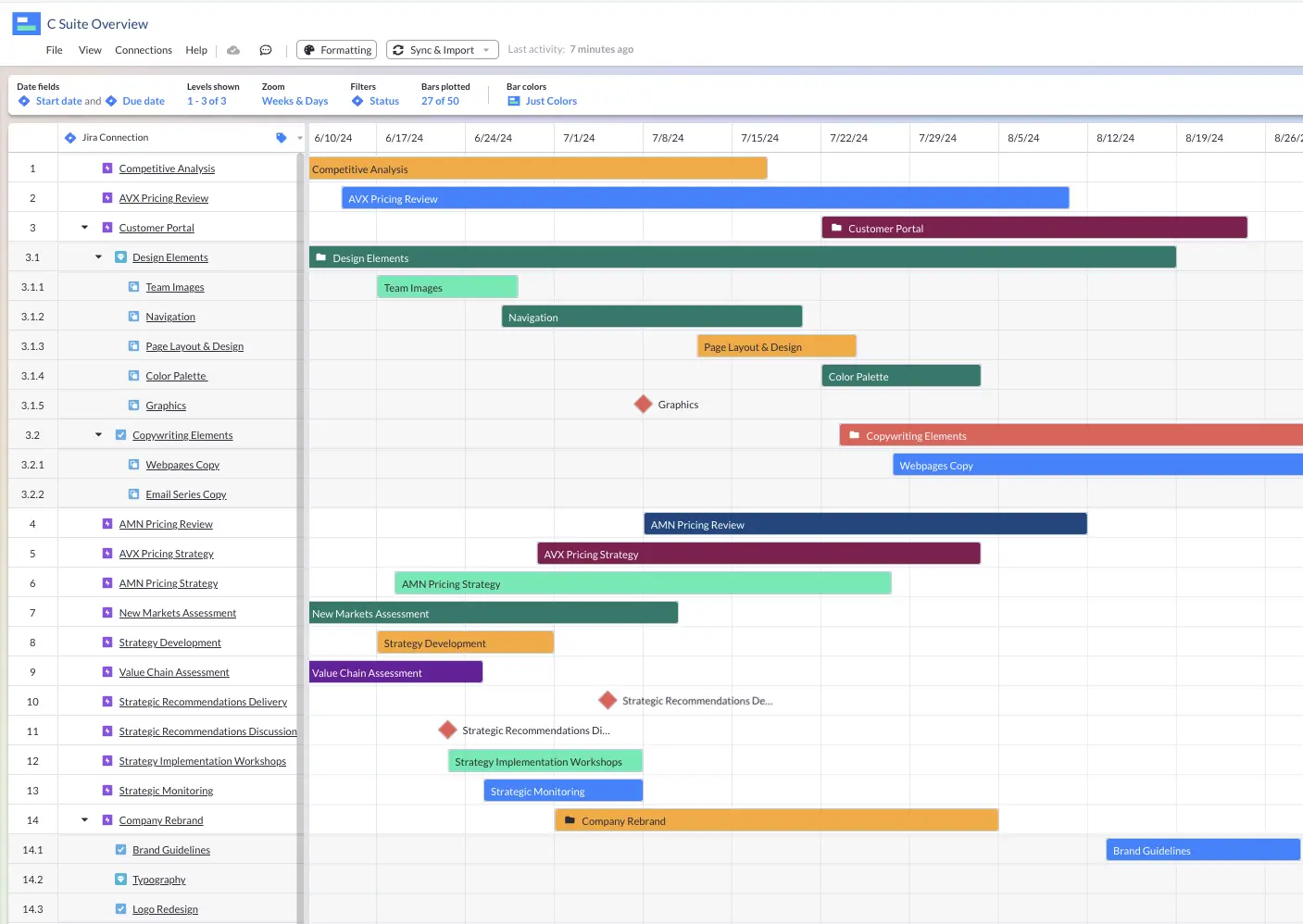
Each bar represents a specific task, while the length of the bar represents the task’s duration. Gantt charts also display at a glance which tasks must be completed before others can start, enabling better planning and coordination.
Looking to build Gantts for multiple projects at once? Visor makes that easy!
Any industry that plans projects can benefit from Gantt charts, from event planning to construction to software development. The more complex the project, the more useful Gantt charts are likely to be.
Gantt charts are excellent because they give project managers a general ideal of timelines while also offering detailed insight into individual tasks. When you’re able to see a project all at once, you can notice where tasks overlap, what tasks need to be done in what order, and what items might be more or less mission-critical.
A flexible Gantt in Visor
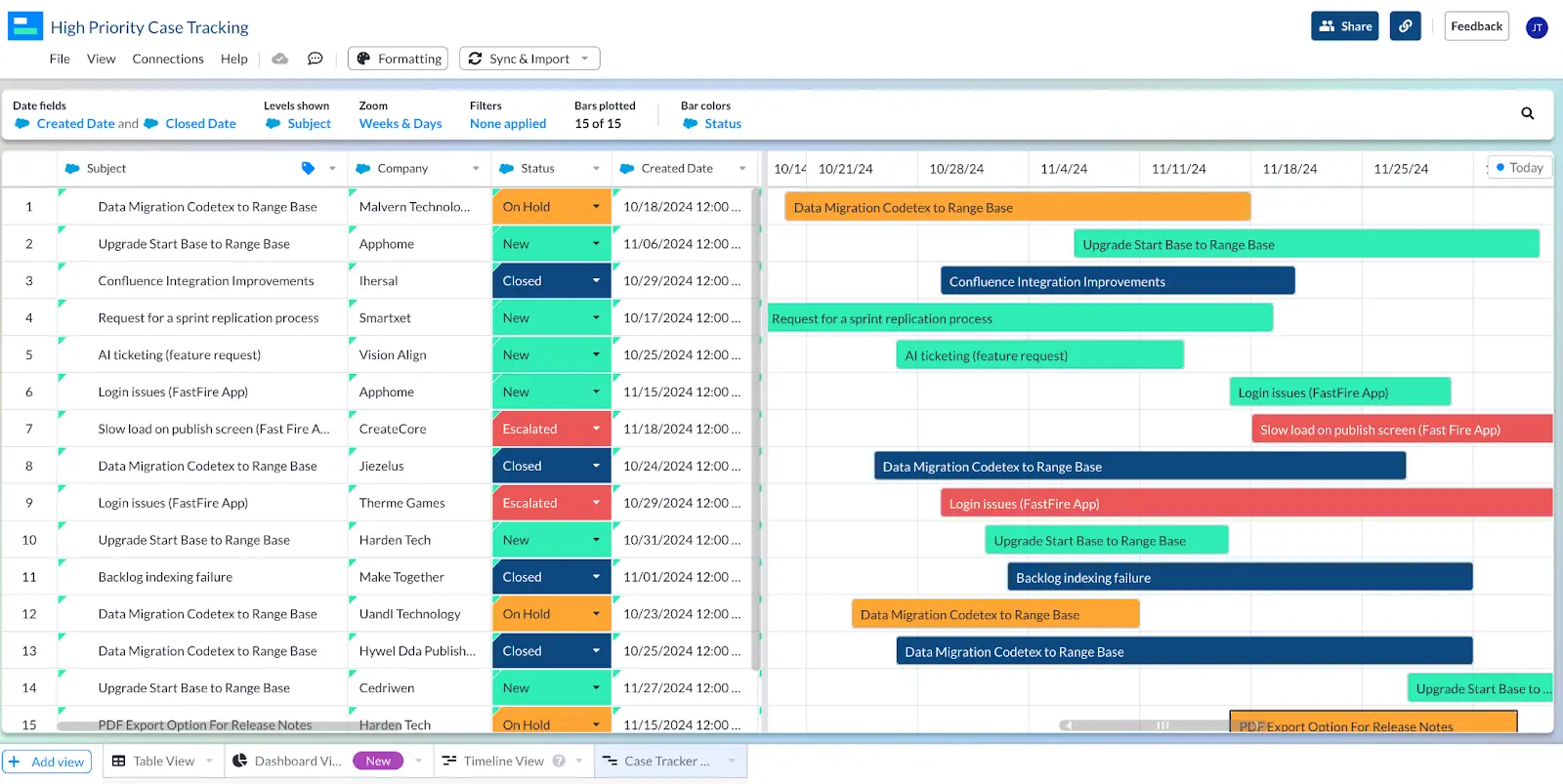
Any Gantt chart that also features color-coding, milestones, and progress tracking is additionally powerful, because they create a much more visually clear and compelling story.
What is a timeline in project management?
In project management, a timeline is a visual representation of the sequence of tasks or events in a given project, displayed in chronological order.
Sounds pretty similar to a Gantt chart, but there are a few key differences.
A timeline built in Visor
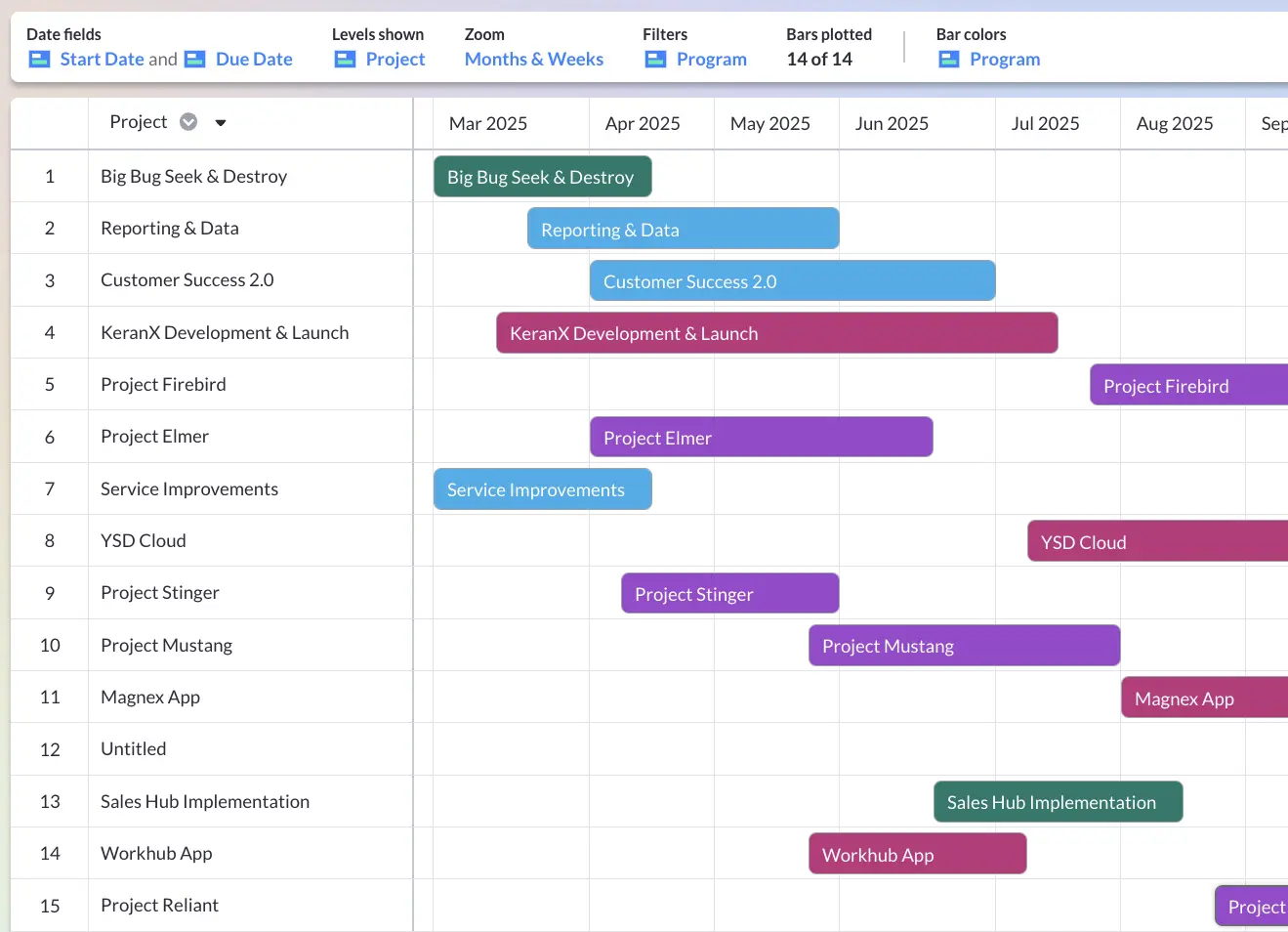
Visor offers templates for Project Timelines. In addition, there are many Gantt chart templates that can help you get started.
Unlike Gantt charts, which focus on task dependencies and durations, timelines provide a high-level overview of key milestones and deadlines. They’re especially useful for highlighting critical events such as project kickoffs, review meetings, and final deliverables.
While Gantt charts can be very granular, timelines are generally much more simplified. Timelines are great for presenting project progress to stakeholders or team members who don’t require a deep dive into task-level details.
A simplified Visor timeline
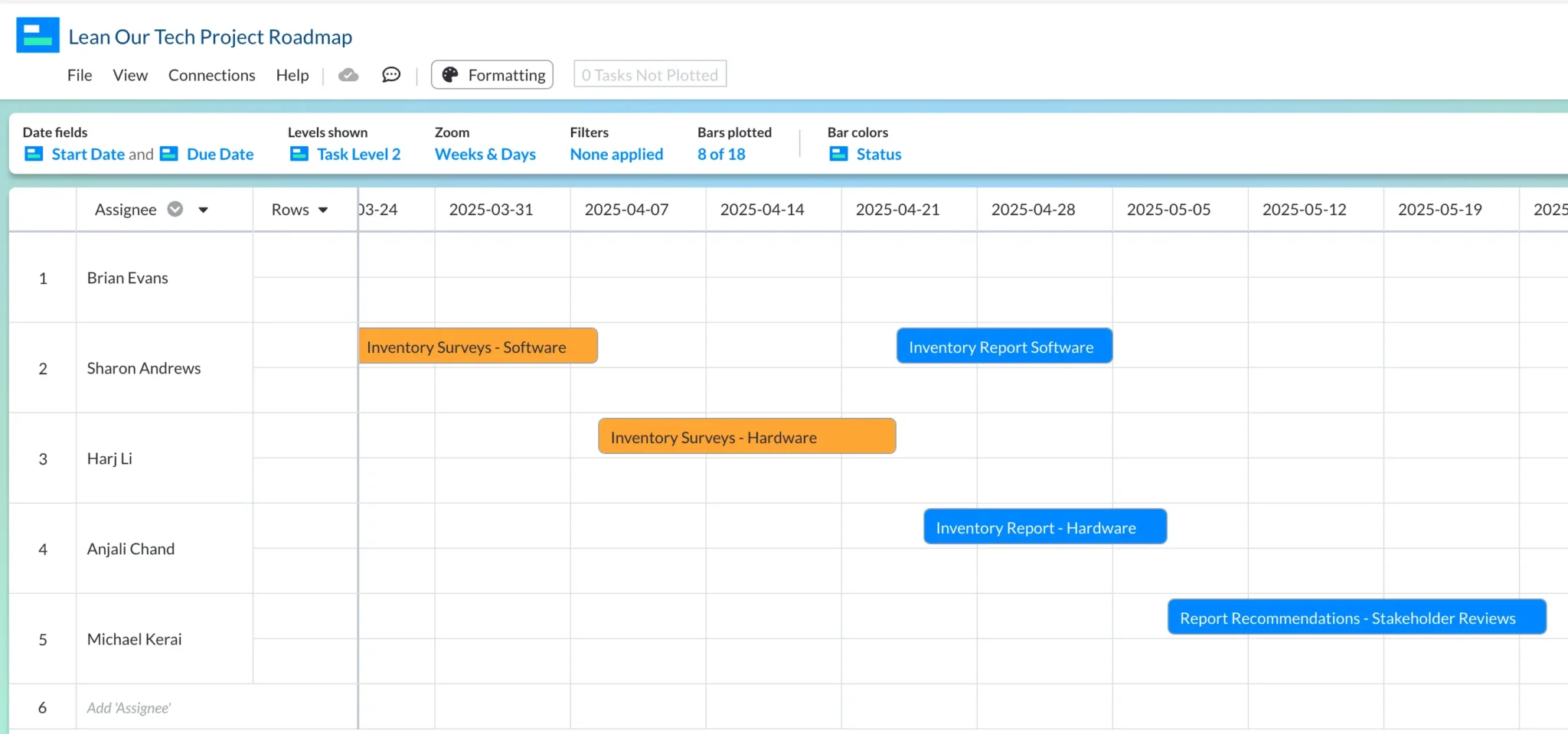
Timelines help teams and stakeholders understand a broad project scope at a glance. They enable alignment by clearly showing when you can expect to reach specific milestones, and can help display how the project aligns with organizational goals. Sometimes, if your projects are smaller or less specific, a timeline might be all you need.
When to use a Gantt chart vs a timeline
The right time to select a Gantt chart vs timeline is dependent on a few things, but you should mainly focus on why you need the chart in the first place to tell you which one makes a better fit.
When to use Gantt charts
When your task is complex, with a lot of interdependent tasks, and the granular detail matters a lot, you want a Gantt chart. This is usually when you’re trying to use a chart to actively manage a project as you go through it.
Great reasons to use a Gantt chart include:
- You need to spot resource allocation and constraints
- You need to know task-level dependencies
- You’re actively coordinating your team using the chart
- Your project is highly complex
Reasons you might not want a Gantt chart are:
- You’re presenting on project progress to stakeholders
- You’re managing a project with a kanban but want to look at the due dates
A detailed, integrated Gantt chart with Asana data:
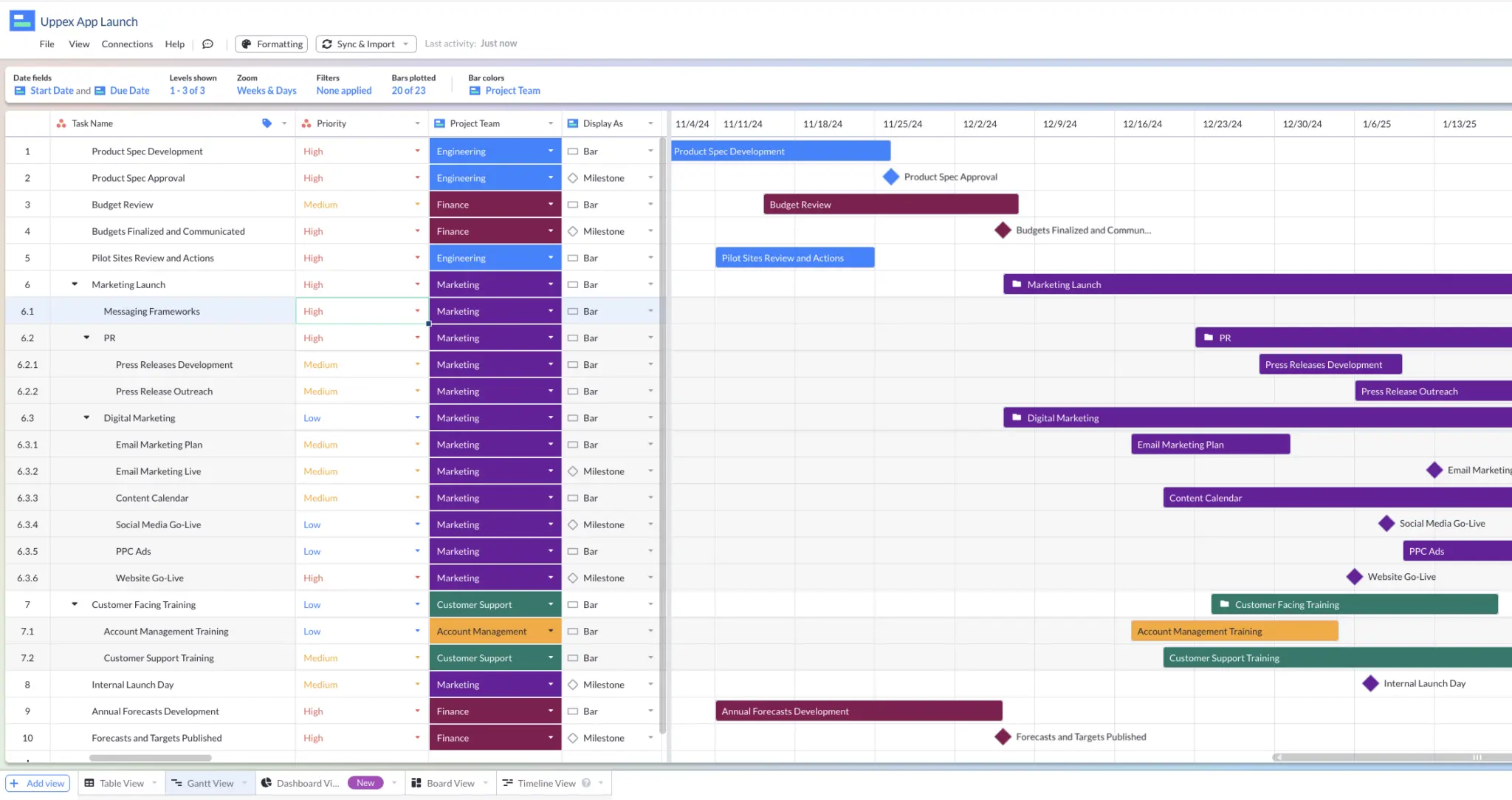
When to use project management timelines
On the other hand, timelines are better suited for simpler projects or high-level presentations where only critical dates and milestones need to be conveyed.
Great reasons to use a timeline include:
- You’re presenting to stakeholders
- Your project is very straightforward
- You’re not managing your project using this chart, but want a peek at due dates
Reasons you might not want a timeline are:
- Your project is very detailed
- You’re trying to juggle dependencies or resources
A team capacity focused timeline
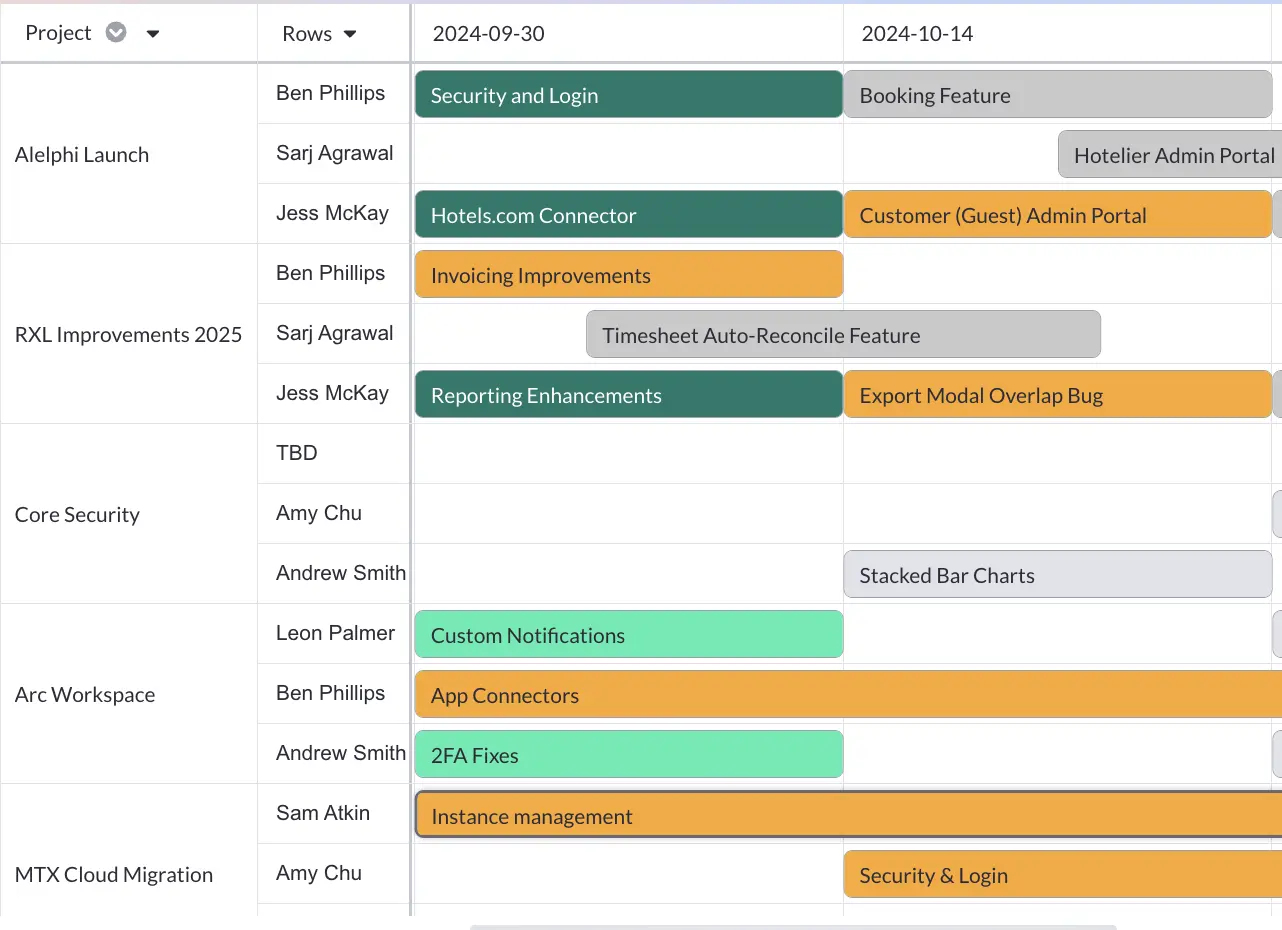
The Gantt chart vs timeline choice really comes down to audience and complexity. Actively planning your project and working with the team directly? Gantt charts! Communicating progress to your stakeholders or just looking for an at-a-glance chronology? Timelines!
Many project managers find it useful to use both tools in tandem by leveraging Gantt charts for planning and execution while turning to timelines for communication and reporting.
Best tools for Gantt charts vs timelines
Here’s the secret: you don’t have to pick between Gantt charts vs timelines. The best tools you can use to create either can actually create both – so you can have a Gantt chart to manage your daily progress and a timeline to present on it in meetings.
It might sound intimidating to need to create and maintain both charts at once. But the best-in-class options make it stunningly easy to have both.
The images throughout this article have been of one such option. Visor is a flexible tool that can handle every project in your portfolio and display each project in any way you need.
Visor’s Gantt charts are highly flexible and offer deep-dive granularity into every stage of every task. You can display the same data in a variety of views (including Gantts and timelines) without breaking stride.
Creating a new view in Visor
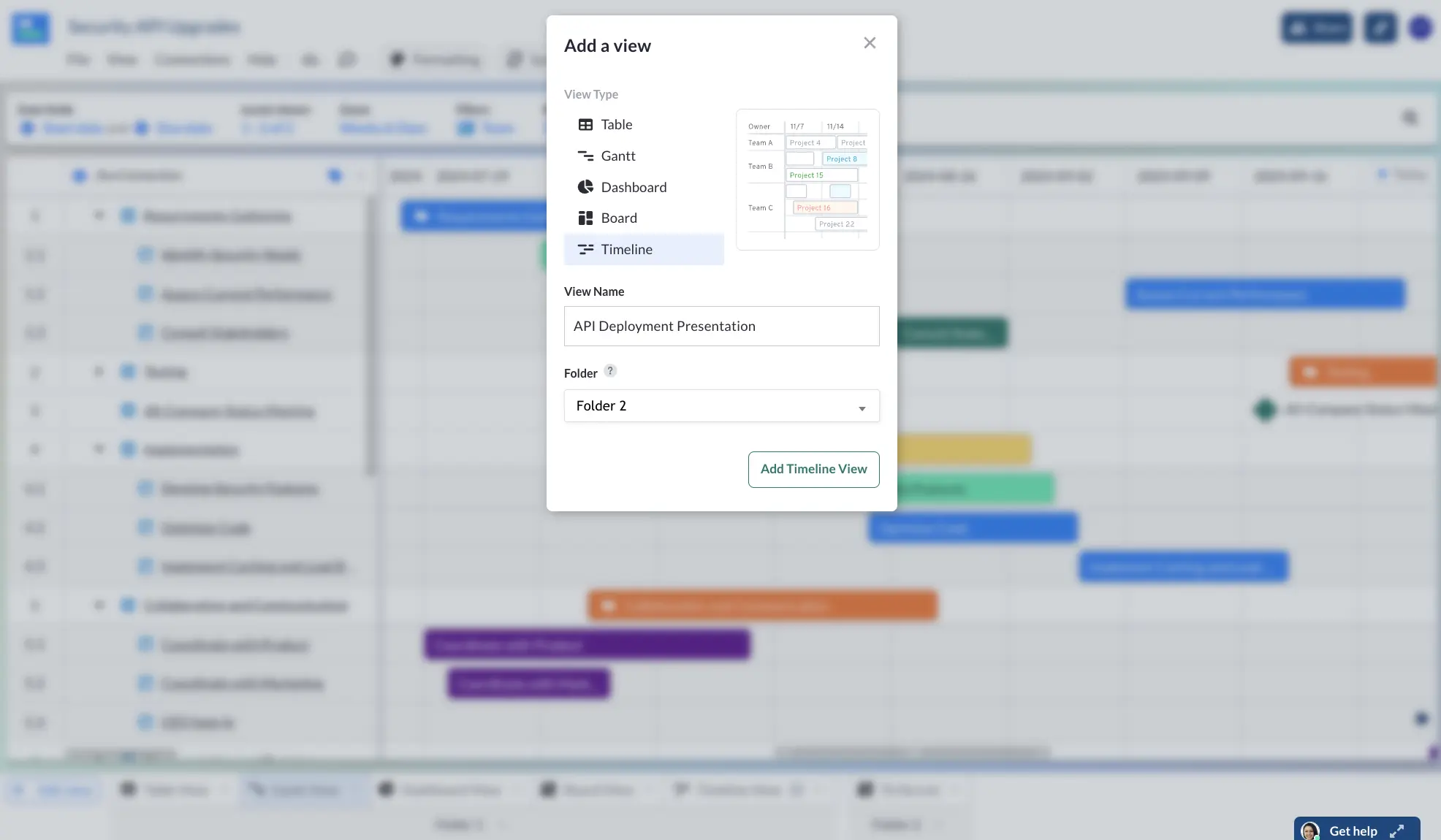
It’s a two-step process that saves you time by being highly intuitive and easy to use.
Choosing timeline details in Visor
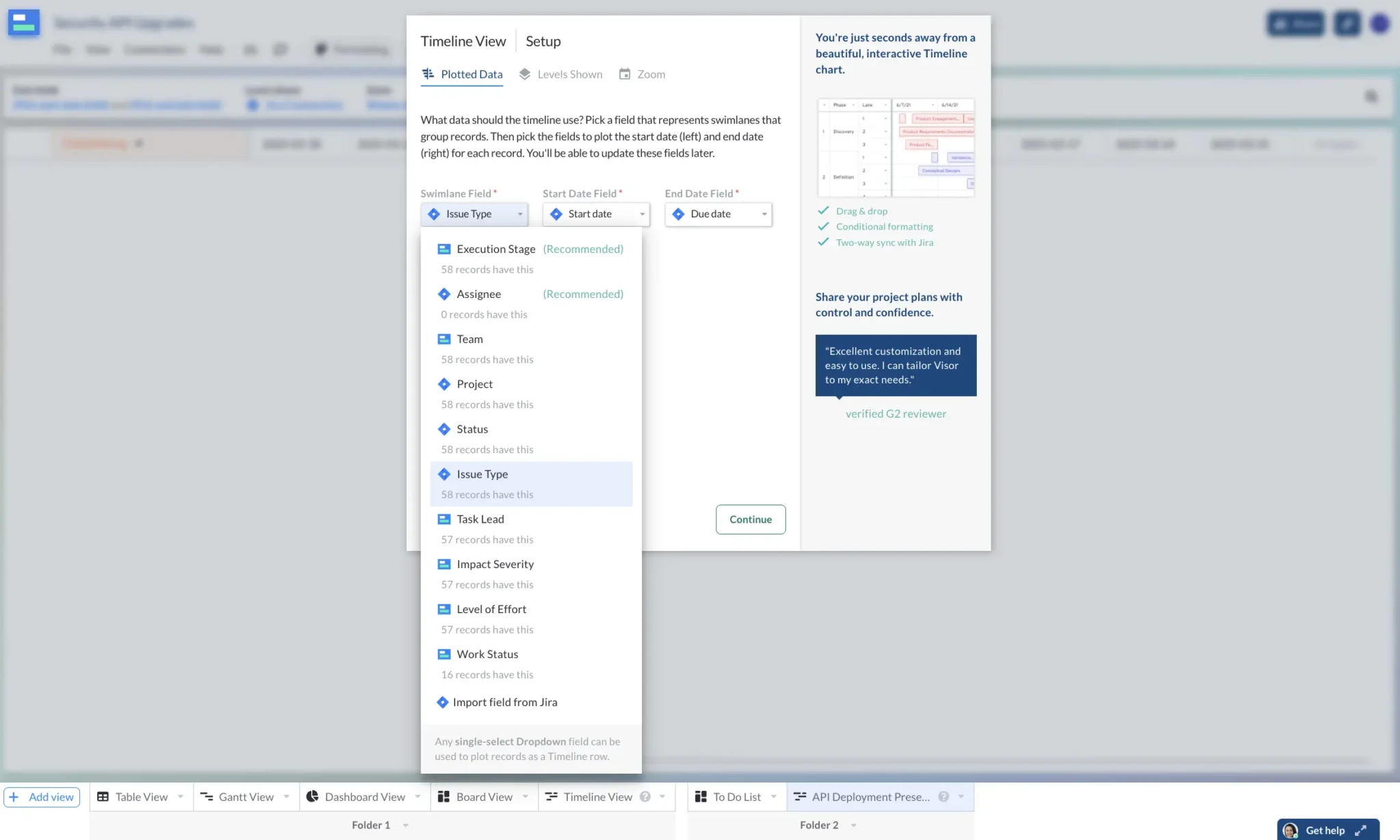
If you need a timeline, Visor offers that same flexibility along with clear labels and the ability to toggle between different factors so you can run your stakeholder presentations like a pro. Share the task status, then switch to a team-by-team view in seconds.
And you can easily put the same data into two different views without needing to worry about completely remaking a new view from the ground up.
The different views aren’t the only bonus. Visor is a highly integrative tool that works with other apps you already use like Salesforce, Asana, and Jira – so you’ll be able to see all of your data from every source in one place – and push any information you update in Visor back to your other apps via our two-way integrations.
Gantt chart vs timeline: What’s best for you?
If you’re looking for the right tool for your project, keep in mind: the more granular it needs to be, the more likely you’ll want to pick a Gantt chart over a timeline. But either might be a good fit for you!
Visor is the best way to take the same data and explore multiple views and charts to find the best way to display it every time. Rich, detailed Gantts and beautiful, presentation-worthy timelines don’t have to be an either-or choice: you can have both with just a few clicks.
Visor also makes it easy to externally share Jira data with clients or external stakeholders, making it a great solution for Jira guest access. In addition, we have many different types of ways you can visualize your Jira data.
Explore the many templates we have for things like customer onboarding or the table views we have for Mutual Action Plan templates. Visor also offers Dashboard views and Kanban board views, making it easy for you to visualize your project data exactly as you wish.


